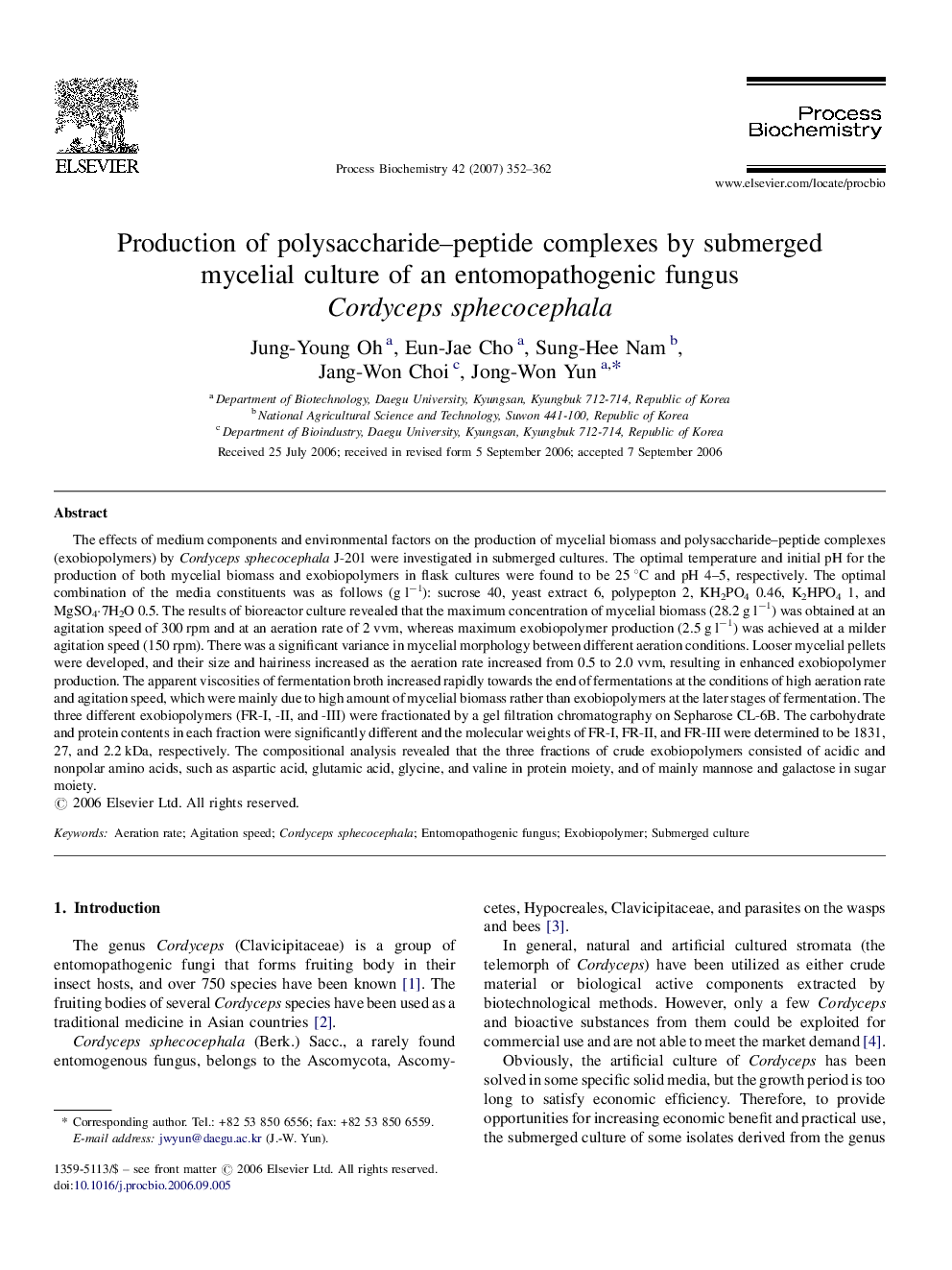| کد مقاله | کد نشریه | سال انتشار | مقاله انگلیسی | نسخه تمام متن |
|---|---|---|---|---|
| 36131 | 45122 | 2007 | 11 صفحه PDF | دانلود رایگان |

The effects of medium components and environmental factors on the production of mycelial biomass and polysaccharide–peptide complexes (exobiopolymers) by Cordyceps sphecocephala J-201 were investigated in submerged cultures. The optimal temperature and initial pH for the production of both mycelial biomass and exobiopolymers in flask cultures were found to be 25 °C and pH 4–5, respectively. The optimal combination of the media constituents was as follows (g l−1): sucrose 40, yeast extract 6, polypepton 2, KH2PO4 0.46, K2HPO4 1, and MgSO4·7H2O 0.5. The results of bioreactor culture revealed that the maximum concentration of mycelial biomass (28.2 g l−1) was obtained at an agitation speed of 300 rpm and at an aeration rate of 2 vvm, whereas maximum exobiopolymer production (2.5 g l−1) was achieved at a milder agitation speed (150 rpm). There was a significant variance in mycelial morphology between different aeration conditions. Looser mycelial pellets were developed, and their size and hairiness increased as the aeration rate increased from 0.5 to 2.0 vvm, resulting in enhanced exobiopolymer production. The apparent viscosities of fermentation broth increased rapidly towards the end of fermentations at the conditions of high aeration rate and agitation speed, which were mainly due to high amount of mycelial biomass rather than exobiopolymers at the later stages of fermentation. The three different exobiopolymers (FR-I, -II, and -III) were fractionated by a gel filtration chromatography on Sepharose CL-6B. The carbohydrate and protein contents in each fraction were significantly different and the molecular weights of FR-I, FR-II, and FR-III were determined to be 1831, 27, and 2.2 kDa, respectively. The compositional analysis revealed that the three fractions of crude exobiopolymers consisted of acidic and nonpolar amino acids, such as aspartic acid, glutamic acid, glycine, and valine in protein moiety, and of mainly mannose and galactose in sugar moiety.
Journal: Process Biochemistry - Volume 42, Issue 3, March 2007, Pages 352–362